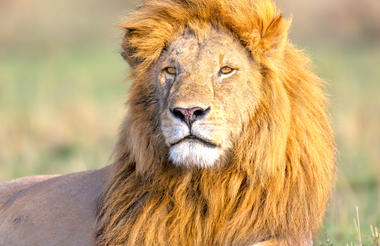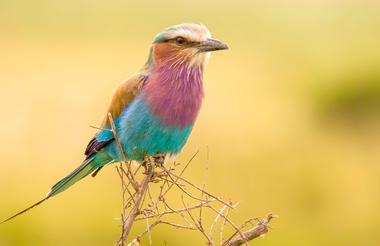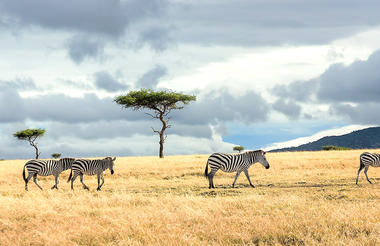Bordering the magnificent Lake Victoria, Uganda’s capital city - Kampala - sprawls out over a series of undulating hills and despite the development, this ‘Garden City’ is known for its tree-lined avenues. It serves as the commercial hub of the country boasting a blend of African markets, modern skyscrapers, international hotels, bars, and casinos. It provides an excellent base from which to explore the surrounding area. Visitors can look forward to learning about the country’s rich and colourful history at the Uganda Museum; enjoying a number of activities on Lake Victoria, Africa’s largest lake; and visiting the Namugongo Martyrs Shrines, a UNESCO World Heritage Site. Don’t miss the opportunity to visit the nearby Mburo National Park to catch a glimpse of local wildlife including: hippo, zebra, gazelles, crocodiles, warthog, and a variety of magnificent birdlife.


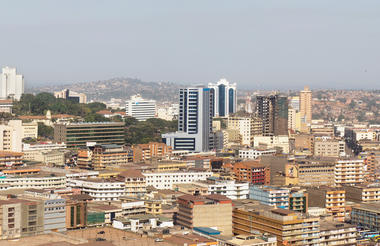
On the eastern bank of the Albert Nile, Pakuba occupies a quiet stretch of gently elevated land where open savannah meets patches of riverine forest. From this ridge, the landscape extends toward the river below, which flows north from Lake Albert into South Sudan. Scattered acacia trees and low hills provide habitat for wildlife such as hippos, elephants, and giraffes, often seen near the water or moving across the plains. Pakuba serves as a convenient base for visiting Murchison Falls National Park, with easy access to boat trips on the Nile and guided game drives through the surrounding area. Late afternoons bring cooler air, soft light, and the distant sounds of wildlife.
Kibale Forest National Park, situated in Western Uganda, is famous for its high density of primates, breathtaking crater lakes, and thick, beautiful jungle. Thirteen primate species inhabit the beautiful tropical forest, including red-tailed monkey, L’Hoest's monkey, grey-cheeked mangabey, red colobus, and black and white colobus monkeys. Visitors may spot some of the 300 bird species and 250 butterfly species, and buffalo, forest elephants, leopards, bushbucks, and sitatungas also live in the park but are generally shy. The area is decorated by around 50 enthralling crater lakes and numerous pristine hiking trails. Several cultural tours are on offer which delve into the rich traditions of the Batoro people, giving travellers a chance to see Batoro dancing, singing and traditional healing up close.



One of the most popular parks in Uganda, the Queen Elizabeth National Park lies in the western region of the country. In the northern part of the park, visitors can look forward to boating along the Kasinga Channel, which is home to the largest population of hippos in the world and an abundance of Nile crocodiles. Along the banks, an incredible number of birds and wild animals flock to the river’s edge. At Kyambura Gorge, fondly known as ‘Valley of the Apes’, chimpanzees are at home in a world of lush tropical rainforest spread with canopies, and three salty crater lakes are decorated with swathes of pink flamingos. On the western shore of Lake George, the vast Kasenyi Plains are inhabited by lions and several interesting bird species.
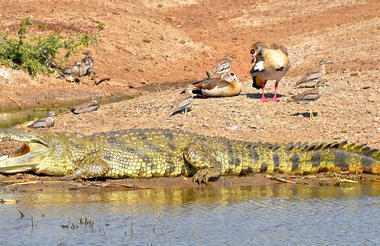


Surrounded by other wonderful parks in the western region of Uganda, the Queen Elizabeth National Park is known for its rich biodiversity, wildlife and history. In the southern part of the park, the remote Ishaha sector is home to tree-climbing lions who spend long lazy days dozing in the pretty fig trees. The Uganda Kob, a type of antelope, are watched carefully by the tree lions while grazing the plains Around Lake Edward, enjoy fishing and more game watching - make sure to look out for chimpanzees, elephants, crocodiles, and perennial and migratory bird species.


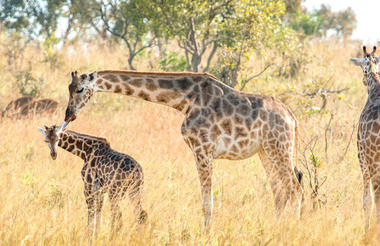
Located in southwestern Uganda, the Bwindi Impenetrable National Park is said to be Africa’s oldest rainforest. It is world-renowned for its excellent gorilla-sighting opportunities - the forest is home to half of the remaining mountain gorillas on earth. This gorilla experience takes place among a rugged landscape of dense jungle, cascading waterfalls, sparkling mountain streams, deep valleys, and steep ridges. The untouched forest has been declared a UNESCO World Heritage Site for its breathtaking natural beauty and unique ecological significance. Aside from the amazing gorilla interactions, there are other drawcards such as a network of forest walks, over 340 species of bird to spot, and a variety of brightly-coloured butterflies to identify.



Located in southern Uganda, Lake Bunyonyi is said to be the second deepest lake in Africa and is home to a variety of water birds, giving it the name ‘place of little birds’. This spectacularly scenic lake is dotted with gorgeous misty islands and surrounded by verdant, undulating, terraced hillsides. It is also a popular stop-off on the way to the famed gorillas that live nearby and unlike many lakes in East Africa, it is crocodile, hippo and bilharzia free. Highlights include camping on one of the islands, swimming in the lake’s crystal clear waters, bird watching, canoeing, and hiking.



Situated in southwestern Uganda, Lake Mburo National Park is a compact and easily accessible gem, renowned for its striking biodiversity. Nearly seventy mammal species and more than 300 bird species thrive in its mix of forests, swamps and rolling grasslands. The landscape blends open savanna with rocky ridges, forested gorges and pockets of dense woodland, creating a rich habitat for wildlife. Crocodiles, hippos and abundant water birds gather around the park’s five lakes, with Lake Mburo the largest. Visitors frequently spot impala, oribi, eland, zebra, buffalo, Defassa waterbuck, reedbuck, hyena and occasionally leopard. It’s a rewarding destination for travellers seeking varied scenery and accessible wildlife viewing.
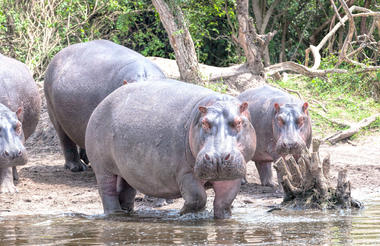

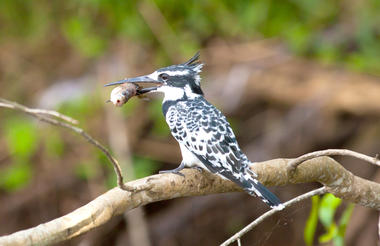
As previously described
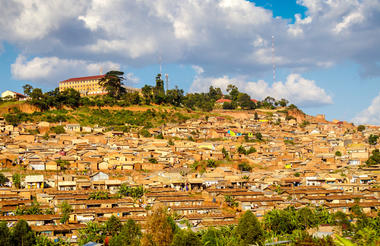

Situated along the Nairobi River in beautiful Kenya, the capital of Nairobi is East Africa's most cosmopolitan city. It serves as an excellent starting point for African safari trips around Kenya. Nairobi is Africa’s 4th largest city and is a vibrant and exciting place to be. There are some fascinating attractions: its cafe culture, unbridled nightlife, the National Museum, the Karen Blixen Museum and most notably, just 20 minutes from the city centre, wild lions and buffalo roam in the world’s only urban game reserve. Make sure you pay a visit to the elephant orphanage operated by the David Sheldrick Wildlife Trust for a once in a lifetime experience.
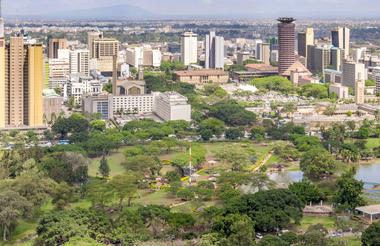
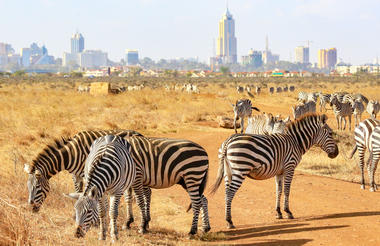
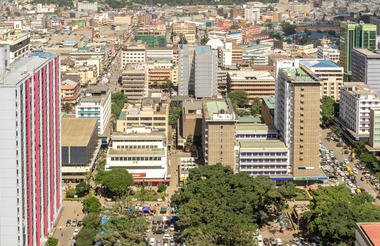
Elmenteita, meaning ‘place of dust’, is a photogenic, little soda lake situated in Kenya’s Great Rift Valley. Famously attracting many visiting flamingos as well as many other birds, it has been named as a World Heritage Site for its prolific birdlife. This is where Kenya’s most famous settler Lord Delamere lived and he was responsible for much of Kenya’s early agricultural experimentation in this fertile area; it is still inhabited by some of his descendants. The shores are often filled with wildlife and the surrounding forests are perfect for long walks and bird watching. Visitors can look forward to visiting the idyllic Kekopey hot springs, game viewing along the lake’s edge, and numerous other activities. Look out for eland, kudu, zebra, gazelle, and warthog families.



Situated in southwest Kenya, the Mara North Conservancy is a beautiful private wilderness area spanning more than 30 000 hectares. It is home to a spectacular array of plants, reptiles, birds and mammals; including elephant, rhino, buffalo, lion, leopard, cheetah and large concentrations of wildebeest, zebra, gazelle and other migratory wildlife. Leopard Gorge, in the heart of the conservancy, is famous as the setting of countless BBC Big Cat Diaries and National Geographic documentaries. Neighbouring the well-known Maasai Mara National Reserve, this conservancy is vital for sustaining the famous Serengeti wildebeest migrations as well as the endangered African wild dog and black rhino.
